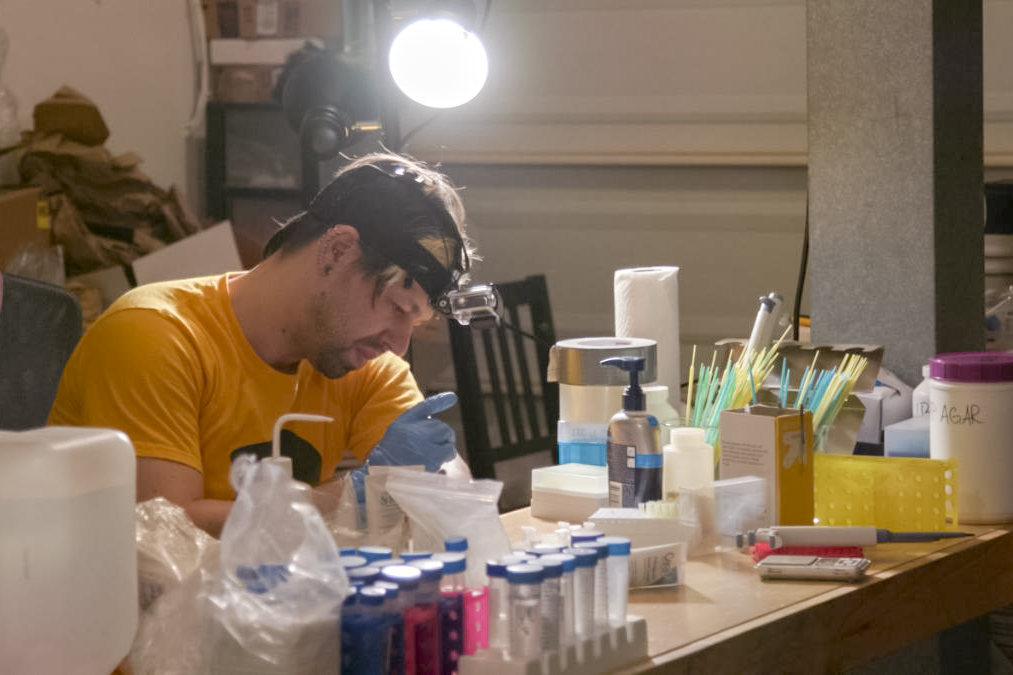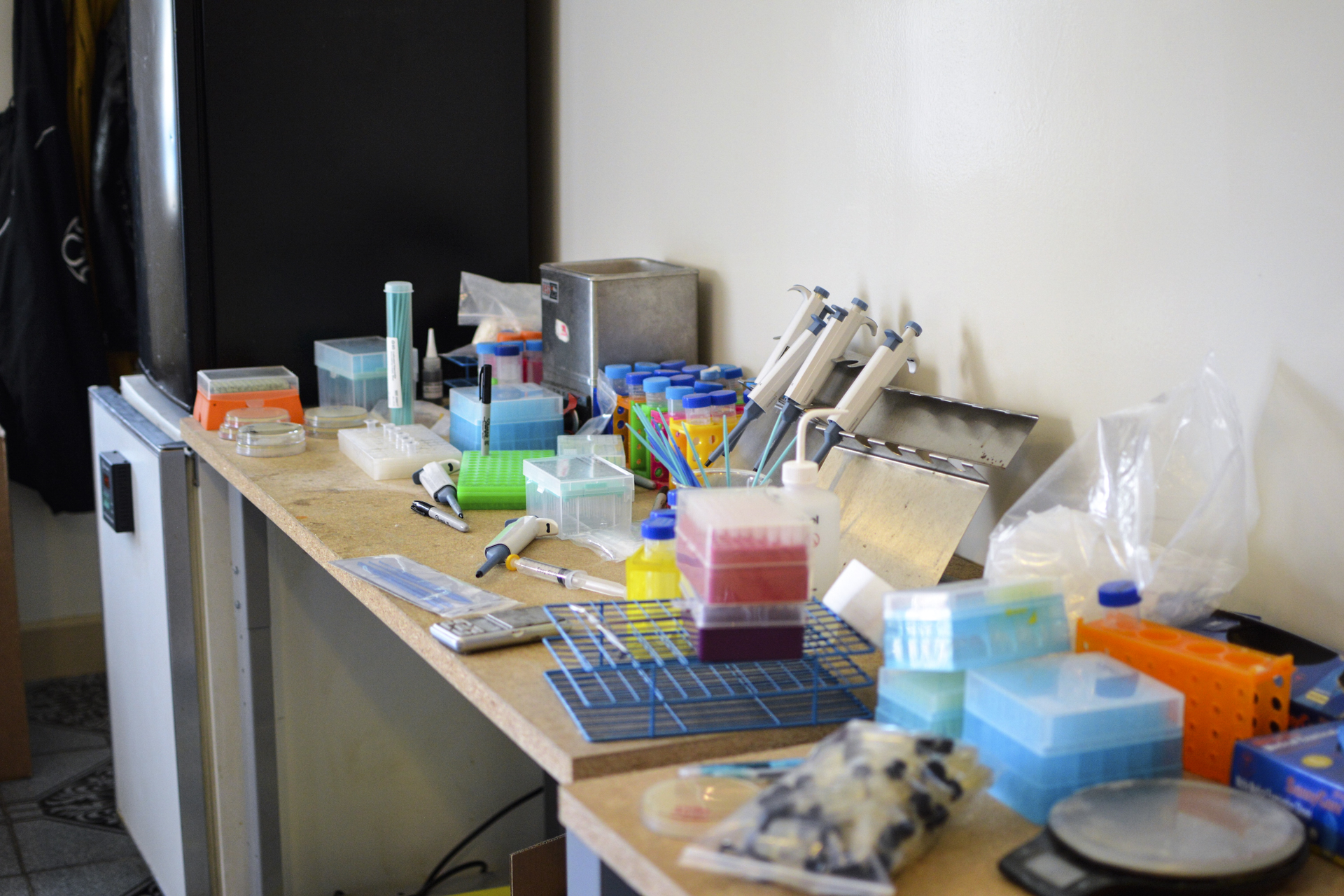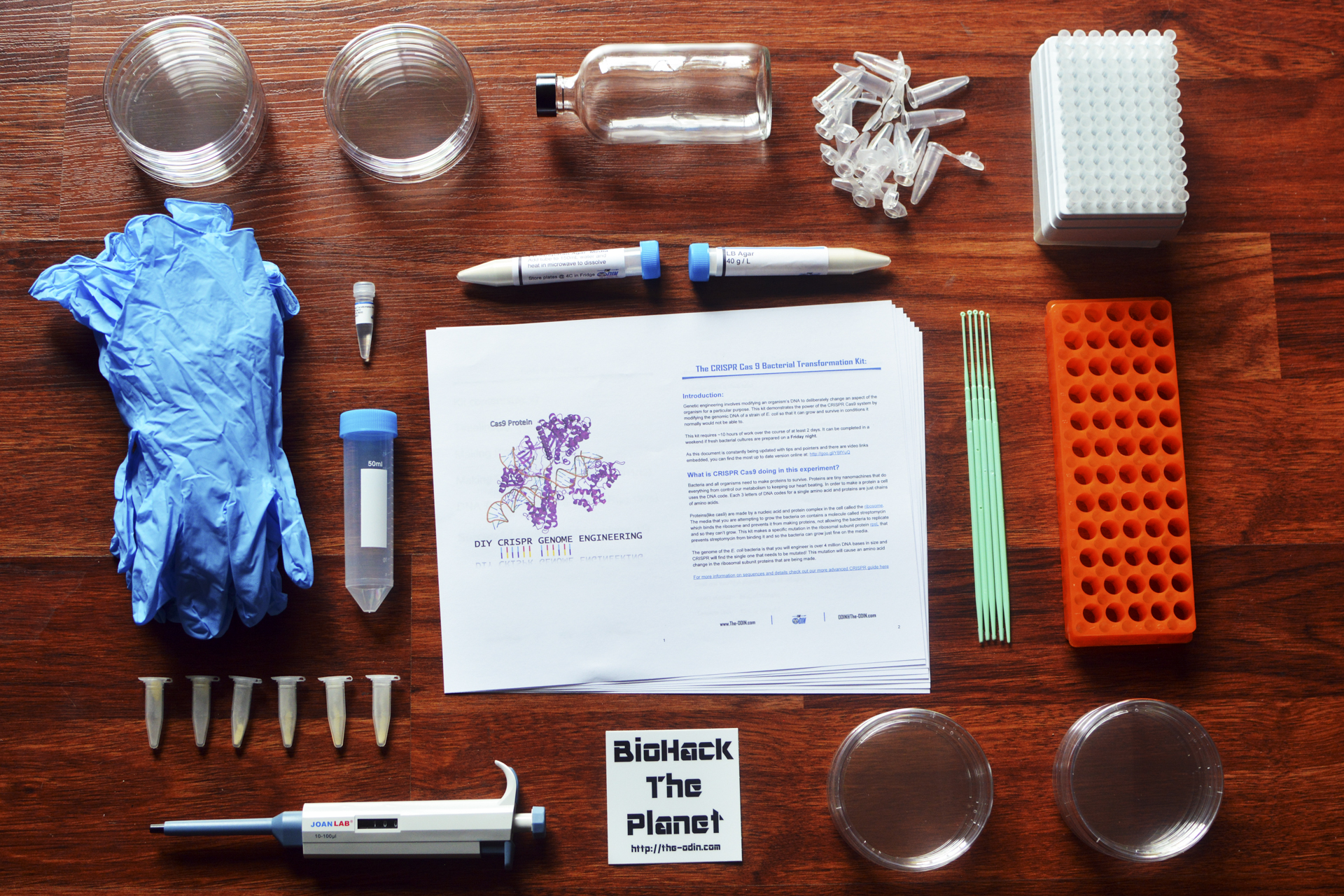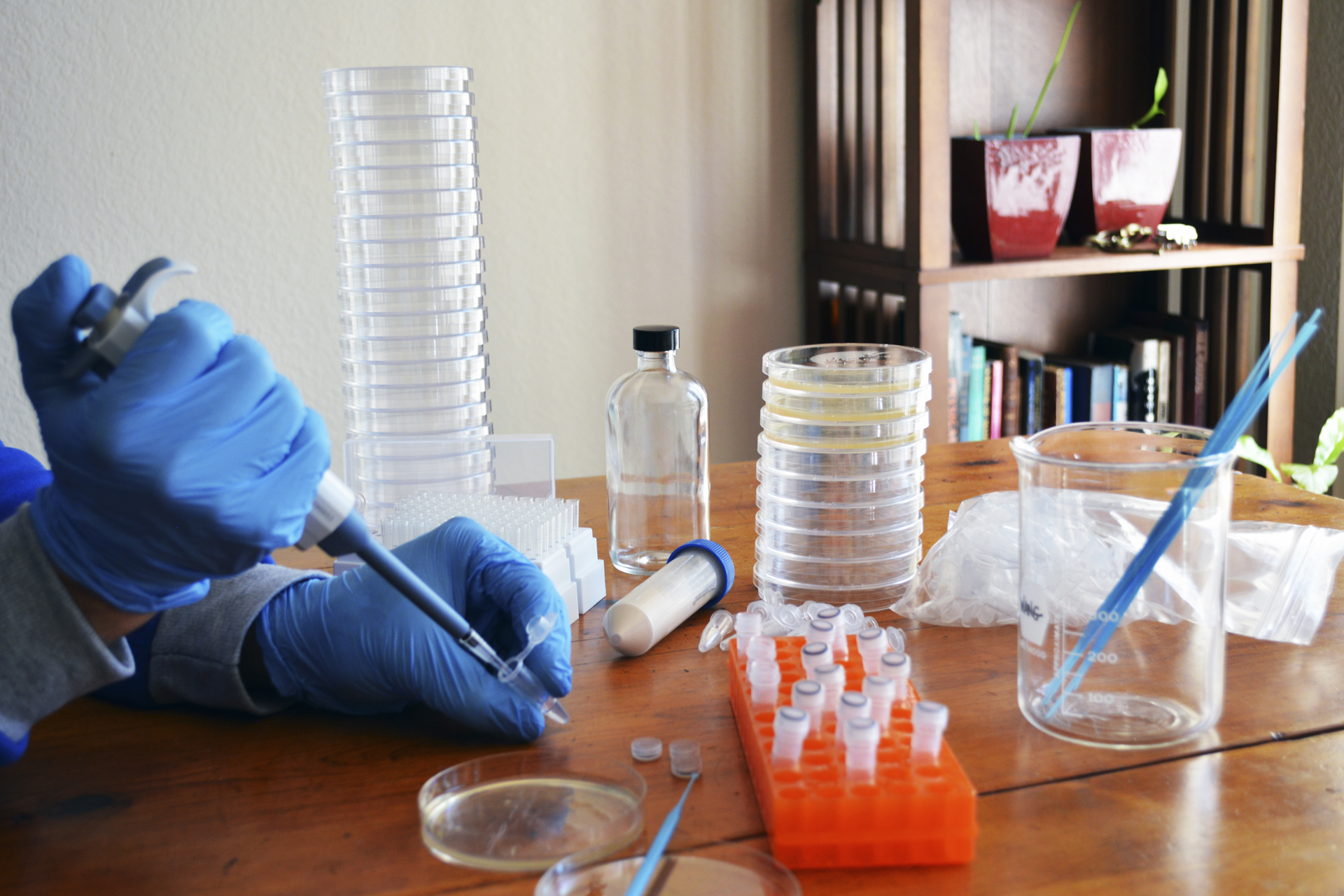In makeshift labs around the country, a ragtag community of tinkerers has taken it upon itself to democratize medicine, disseminate knowledge, and conduct self-experiments not yet sanctioned by the Food and Drug Administration.
Gene therapy is a tool for the masses, they say, not an elitist treatment confined to clinics. EpiPen prices too high? Fine, here’s a DIY EpiPencil. When medications aren’t available for everyone, they don’t just whine about it — they try to make their own in mason jars.
Some outsiders worry that the movement has gotten out of hand, as theatrical firebrands perform stunts, sometimes just for the sake of provocation. But even people within the DIY medicine scene have begun to check the rearview, pump the brakes, and reconsider their route.
We got in touch with a few figures in the field (including a biohacker, pharmahacker, and two bioethicists) and had a chat about the risks and rewards of DIY medicine — from unsanctioned gene therapy to medication made on the kitchen counter. These conversations have been edited and condensed for clarity.
Dr. Josiah Zayner
Zayner, a NASA scientist-turned-biohacking businessman, is arguably the most visible figure in the biohacking community. After a brief stint at the space agency, Zayner, who holds a Ph.D. in biochemistry and biophysics, turned his attention towards The Odin, a company he runs that sells CRISPR gene editing kits and other assorted biohacking goodies to amateur and professional scientists alike.
In Zayner’s view, science — both the practice and it’s products — should be for the masses. Over the past few years, he’s walked the walk of self-experimentation, performing a fecal transplant, jostling with the FDA over the sale of glow-in-the-dark beer making kits, and even injecting himself with a CRISPR construct to see if it’d make his muscles grow. (It didn’t.)
As a self-proclaimed provocateur, Zayner has always been aware of his stunts would bug traditionalists. But now that less specialized biohackers have begun to follow in his footsteps, Zayner says he’s reconsidered the best ways to set others up for success…

Zayner: “I was a little bit naive back then. The hardest thing to see in life is how things will scale. So it’s easy to imagine what happens when genetic engineering and gene therapy are in the hands of a few people. But what happens when a thousand or ten-thousand or a million people know how to do this? That really kind of changes your outlook on things.
“We have to prevent people from doing stuff that they don’t know could hurt them. I don’t regret the things I’ve done. I tend to be a provocateur because it makes people think, respond, and learn. But I’m trying to be more thoughtful to set people up for success rather than for failure.”
“If an individual can be trained [to edit genes] why should only scientists be able to do it?”
Digital Trends: Is that both in regards to what you’re selling and the type of experiments you’re running?
Zayner: “Yeah, both. We recently started working on genetic engineering kits using frogs. A lot of people are into gene therapy and some have just injected themselves without thinking about it, without testing it, without knowing what it’s going to do. That’s not such a great experiment.
“What happens if instead we teach people how to work with animals? Then, if they really are serious about using a gene therapy on themselves, they could test it out on a model system, do some actual science first, and make sure it works and won’t hurt them. There are easy ways to test all these things in animals.”
DT: What’s included in this frog kit?
Zayner: “Right now it’s just a gene therapy with this gene called Insulin-like growth factor 1. It’s expressed in humans mainly during puberty. It’s a great first target because you’re looking for a physical response to the gene therapy that’s easy to see and easy to measure.
“We’ve experimented on 20 or more frogs and seen really positive results. The next step is to teach people how to safely and humanely work with these animals. I see no reason that only scientists should be able to do this stuff. If an individual can be trained to do it why should only scientists be able to do it?”
DT: I guess the counter-argument would be that scientists are better trained to understand the limits and risks, and that the gene therapy for frogs could give an amateur an inflated idea about what they can actually do.
“But what’s the other alternative? That people just suffer and die and nothing happens?”
Zayner: “Well is that a bad thing? Are you saying because they tried something on the frog and it worked and injected it into a human, it’s a bad thing?”
DT: Yeah, I could imagine that having unforeseen negative consequences.
Zayner: “I can’t see it but, I mean, it’s possible. The whole point is to set up a system so that the negative consequences are very far removed. Obviously there’s always the possibility for negative consequences in every situation. But there’s this hunger and thirst for gene therapy because so many people are suffering and dying. So, I’ve got two options morally: I can do nothing because I want to follow our laws or I can help.
“How do I work within the system to help these people in the best way possible? I can’t sell them the gene therapy directly to use. For one thing, I’ll be shut down by the FDA. But what I can do is teach them how to create their own gene therapy. Obviously everything is dangerous and somebody’s going to get hurt eventually. But what’s the other alternative? That people just suffer and die and nothing happens?”
DT: Do you really think it’s inevitable that someone gets hurt?
Zayner: “Oh, of course. Has there ever been a technology where somebody didn’t get hurt? Here’s the thing about technology — you kind of need people who are smart to develop them and also need people who are stupid enough to try them. Flying planes, going to outer space, driving automobiles. I can imagine the first person to do it probably wasn’t the smartest guy. I’m talking about myself here also. It takes somebody who has a little bit of crazy because otherwise nothing gets done.”
Dr. Jennifer Miller
Miller is a bioethicist who wears many hats. She’s the founder of Bioethics International, a nonprofit organization focused on bioethics and patient-centricity in healthcare innovation, and of the Good Pharma Scorecard, an index that ranks new drugs and the ethics performance of pharmaceutical companies. She’s also a member of the World Economic Forum and an assistant professor at Yale School of Medicine.
In Miller’s mind, DIY movements are driven by two key factors: the democratization of information and distrust in large institutions. With the internet and platforms like Wikipedia, anyone can become an expert — or, at least, study enough to think they’ve become one. Meanwhile, rising drug prices and Big Pharma marketing tactics have made people suspicious of both the FDA and drug companies.
There’s a lot of valuable patient-lead research being conducted, according to Miller, but she worries about the risks of “rogue medicine in a bathtub”…

Miller: “The trouble with medicine is that unlike, say, gardening, where the consequences is that you kill a plant, you could really harm your yourself with medicine. And so we do want the FDA there to regulate and protect consumers from false claims and from any kind of charlatan or quack peddling a product.
“We used to have a lot of suspect people selling quackery medicine. The FDA said, ‘No, no, this is very dangerous. We’re going to regulate what you can market a product for.’ But today you just have this balance where people want faster access to things and then they have a growing distrust of the FDA and big business. They’re starting to go back to that old self-experimentation non-regulated product use.”
DT: Are there any glaring ethical concerns you have with with some DIY medicine that you’re seeing today?
We have to self-advocate to make sure our government and institutions have our best interests in mind. But at some point you have to trust in our governance system.
Miller: “I think the FDA is doing a good job of trying to straddle the balance between access and safety. DIY sort of wants access to untested medicines or therapies more quickly. The FDA is realizing this so they’ve been creating pathways for people to access experimental drugs. You can now apply to the FDA for access to experimental therapies through Expanded Access and Compassionate Use programs. The FDA approves 99 percent of them.”
DT: So is it fair to say DIYers are having a positive impact on conventional medicine by encouraging the FDA to green light therapies more quickly?

Miller: “It really depends on what you look at. HIV patients in the 80s didn’t think the FDA was approving products quickly enough or paying enough attention to that area, so they were doing a lot of DIY. It turned out that wasn’t the best bet. The FDA was cautious for a reason and the products that they ended up approving were better than the ones that the patients were using on their own.
“You always need a balance. We have to self-advocate to make sure our government and institutions have our best interests in mind. But at some point you have to trust in our governance system. There are these checks and balances in place for our safety, and one of them is to make sure that products are tested for safety and efficacy before we start self-experimenting. The EpiPen problem was a reaction to drug pricing problems. The solution is to make sure the EpiPen is accessible.”
Dr. Mixael Laufer
Laufer was in a small town in El Salvador in 2008 when he first conceived of Four Thieves Vinegar, an “anarchist collective” whose goal it is to make medicine accessible for everyone. To do so, Laufer has set out to create the Apothecary MicroLab, a sort of home-brew kit for making your own medications, while aiming to release instructions for how to make these drugs online.
This hasn’t been Four Thieves only DIY medicine stunt. Two years ago, Laufer, who holds a Ph.D. in mathematics and teaches at Menlo College, made international headlines when he released instructions for a DIY “EpiPencil” after the price of the EpiPen skyrocketed. The move was heralded as heroic by some, admonished as dangerous by others, but nonetheless drew more attention to America’s untethered drug prices problem.
Now, to promote Four Thieves Vinegar’s effort, Laufer takes to stages at hacker conferences across the country, ostensibly handing out homemade compounds like Narcan (used to prevent opioid overdoses) and Daraprim (used to treat infections in people with HIV). Though we couldn’t verify the existence of any collective members other than Laufer, he insists that a rotating crew of experts — from chemists to computer programmers — work anonymously behind the scenes.
Four Thieves has been the target of criticism, not least of which was levied by chemist and blogger Derek Lowe, who, among other things, recently called the collective “largely bullshit”…
Laufer: “I wish instead of saying that he is the expert, and people without his knowledge and resources will never be able to do the things he does, [Lowe] would instead offer to lend his expertise so that we might do things better. We would take the help if he offered it.
“But this is of course how we ended up in this conundrum to start with. Those without access ask for help, and the help is refused. Following that, they try to make do without assistance, and then are told that they shouldn’t meddle in the affairs of those with access. This is a true shame, because there is such amazing possibility for collaboration between institutions, and those who are doing the best they can without institutional support.”
The problem is that a tremendous cross-section of the people who need those medicines don’t have access.
DT: Can you summarize the goal for Four Thieves Vinegar?
Laufer: “Humanity has a tremendous wealth of medicines and technologies. The problem is that a tremendous cross-section of the people who need those medicines don’t have access due mainly to price, legality, or lack of infrastructure. But when you develop methodologies by which people can manufacture their own medicines, you bypass all of those systems.
“That’s the goal — to make it so that people who would otherwise not have access these medications at all can merely create access by creating the medications from scratch.”
DT: Is the vision that everyone would have their own MicroLab or access to one?
Laufer: “The real vision is that we can cease to exist. We will start the process and eventually the open source movement will take over and people will take what we’ve done and figure out new ways to use it. People will find new designs that run more effectively and efficiently. And home-brew chemistry can become as common as 3D printing or using computers.”

DT: You’ve focused on synthesizing five or so drugs with the MicroLab. Have you had success with these?
Laufer: “We’ve had varying degrees of success. In an attempt to make things easier and safer we’re working very hard to try and get things to a point where the synthesis pathways that we’re utilizing have very wide margins of error, so somebody who makes a mistake and is not classically trained in the sciences can still utilize it and not have to be terribly attentive to details. We’re still trying to dial it back to the point where it would be sort of a push-the-button-and-walk-away interaction.”
“If you are going to die, why not try anything to stay alive?”
DT: Once you’ve synthesized a compound at Four Thieves, how do you ensure that you’d made what you think you’ve made? Have you run tests?
Laufer: The chemistry team does that. I’m trying to make sure that people with great expertise have their hands on this. I kind of coordinate. Most of what I do is trying to make sure that the different teams are talking to each other and that things are working out well.
DT: Lowe, the blogger and chemistry expert, said it would be “foolish” to take a DIY drug without purifying and characterizing it first to make sure you made what you think you made. How do you respond to that?
Laufer: “If you are going to die, why not try anything to stay alive? If you can’t analyze the compound you’ve made because you can’t get access to gas chromatography-mass spectrometry or nuclear magnetic resonance, is it foolhardy to take it? Is it safer to do nothing, and die? The idea here is that it’s about personal choice — people should have the capacity to make that decision for themselves.”
Dr. Hank Greely
Greely, the founding director of the Center for Law and Biosciences at Stanford University, has long been a voice of caution against biohacking. It isn’t that he disapproves completely, it’s just that the rewards don’t seem to outweigh the risks. Greely’s brother likes to tinker around with old cars, he says, but that doesn’t mean he’d let his brother build him a brand new automobile.3
Even professional science that’s conducted in sanctioned and sterilized labs can have unforeseen consequences, as Greely explored in his 2016 book “The End of Sex: And the Future of Human Reproduction.” He suggests we think about the 76 deaths during the New England Compounding Center meningitis outbreak in 2012 when considering the risks that could arise from amateur chemists attempting to concoct drugs in their kitchen…

Greely: “DIY medication strikes me as a really bad idea.”
DT: How so?
Greely: “Because medication is tricky and the chances that you’ll screw it up are very high. The synthesis process, the sterilization process, the shipping process, keeping it as the right temperature — making drugs is really tricky.
In a second-best world, where not everybody has access to good drugs, maybe having bad drugs is better than nothing.
“Then there’s a bunch of non-physical aspects to it. The FDA requires every drug be made in lots of a particular size and each lot be labeled, so if it turns out there’s something wrong with a pill, you can check or recall the whole lot. Drugs are dangerous and they’re hard to make both effective and safe. Some of it is technical but a lot of it is just sort of mind-numbing bureaucratic box-checking, which can drive you crazy. But it turns out to be useful bureaucracy. This just seems like a really bad idea.”
DT: DIY medicine hackers think it’s better to have the freedom of choice to manufacture your own medication or perform your own therapy than be stuck with whatever illness you’ve got.
Greely: “Maybe. It depends on how good the chances are it will cure you, how high the risk is of side effects, and just how inaccessible the drug really is. In a first-best world everybody has access to good drugs. In a second-best world, where not everybody has access to good drugs, maybe having bad drugs is better than nothing. But I think we’re almost always better off trying to push for ways to get access to the drugs that we really need.”
DT: Four Thieves also gained notoriety when they released instructions for a make-your-own EpiPen…
Greely: “It’s smart for them to feature the EpiPencil because it is one that’s really important. The price has gotten outrageous. But so many things could go wrong with a DIY auto-injector. I’m not at all confident that this cost-benefit analysis would say you’re better off using the black market then not using one at all. To the extent the black market ones work, that could arguably put some pressure on governments and drug manufacturers to make this stuff more accessible. But if [DIY groups] aren’t stocked with regulatory and safety specialists, I get nervous. If it’s somebody doing it in their garage or their kitchen, I get really nervous. I know how bad I am at measuring out ingredients for cooking. The idea that I would make my own medicine is terrifying.”












